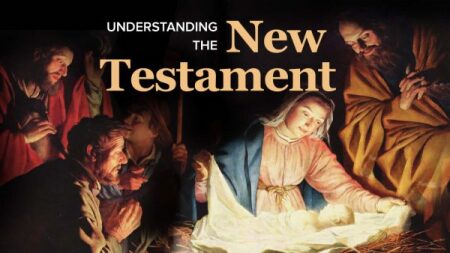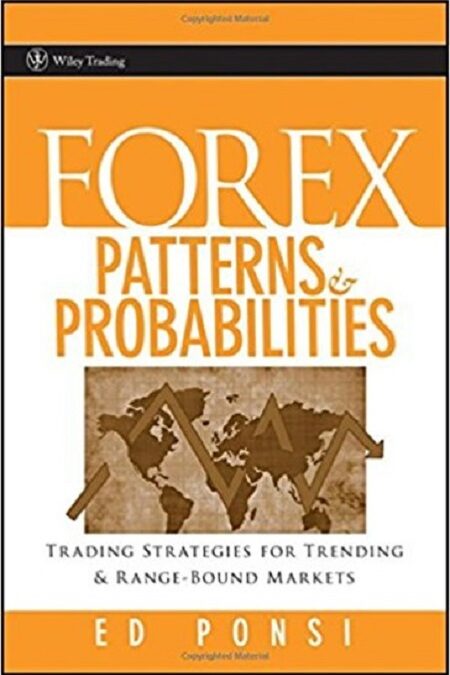
Understanding the New Testament | 10.2 GB
The New Testament is a fascinating book-the canonical root of Christian history and theology.
Yet the book is also a paradox, because this single “book” is comprised of 27 different books by more than a dozen authors, each of whom has a different perspective and is responding to a different set of historical circumstances. How do you reconcile this diversity of voices into a single, unified belief system And should you even try
For historians, the diversity of authors is not a challenge to be reckoned with, but rather an exciting opportunity. In the New Testament, we have 27 primary sources that offer a doorway to the captivating history of the early Christian communities. In these books, you can discover how:
Christian practices developed;
Conflicts of belief were debated and addressed;
The institution of the Church evolved; and
A man named Jesus of Nazareth was transformed into the Messiah.
Join Professor David Brakke, an award-winning Professor of History at The Ohio State University, for Understanding the New Testament. In these 24 eye-opening lectures, he takes you behind the scenes to study not only the text of the New Testament, but also the authors and the world in which it was created. You will explore Jewish lives under Roman occupation, reflect on the apocalyptic mood of the first and second centuries A.D., and witness the early Christians’ evangelism beyond the Jewish communities.
Moving through the New Testament chronologically, starting with Paul’s letter to the Thessalonians, Professor Brakke identifies the evidence for when each book was written, along with context that helps explain why each was authored. He also points out discrepancies in the narrative and helps identify the “why” behind the differing accounts.
You might think that a rigorous historical analysis would take away the mystery and magic of the New Testament, but as Professor Brakke ably demonstrates, a deep investigation shows just how extraordinary the New Testament really is. You will gain insight into issues that remain vital for Christianity today, from the tension between faith and works for salvation, to Christian relations with the government, to the role of women in the congregation. In Understanding the New Testament, you will witness the birth of a faith that continues to shape our world.
The Epistles of Paul: All about Audience
Beyond Jesus himself, the most important figure in the New Testament is the apostle Paul, who evangelized in the middle of the first century A.D. More than a dozen letters in the New Testament are ascribed to him (though he likely didn’t write all of them himself), and these letters collectively present a survey of early Christian theology, including:
The primacy of faith over works for salvation;
The relationship between Christianity and governing laws;
The nature of imprisonment and slavery; and
What it means to be a pastor or teacher.
In addition to presenting the content of Paul’s letters, Professor Brakke gives you the historical context around why they were written, and who they were written for. For example, as an apostle, Paul roamed the region, setting up one congregation after another. His letter to the Galatians serves as a rebuke to one of his congregations after he left. He believed the Galatians had backslid when some new preachers came to town, and he wrote the Galatians to reinforce his key message of faith as the means for salvation.
Throughout your investigation, you’ll also consider questions of authorship. While 13 books in the New Testament are ascribed to Paul, most historians agree several letters-such as 1 and 2 Timothy and Titus-were not written by Paul himself. Why were some of these letters possibly forged And what does that tell us about the development of Christianity What does it mean for our understanding of the New Testament
The Gospel according to Whom
The gospels are, of course, the heart of the New Testament, telling the story of Jesus of Nazareth, his life, death, and resurrection. As theological documents, they are rich with moral instructions and inspirational stories. As historical documents, they offer a tantalizing window into one of the most exciting periods in human history, in which one poor prophet in a scruffy backwater created a revolution that completely up-ended the old religious order.
By analyzing the four gospels as historical documents, you will run into a number of challeg questions, including:
Who wrote the gospels anyway
When and why were they written
Are they accurate accounts of the historical Jesus
How do they tell a similar or, more interestingly, different story
What do historians make of the discrepancies
To help answer these questions, Professor Brakke offers plentiful explications of the texts. For instance, you will reflect on the story of the feeding of 5,000 as presented in Mark versus Matthew-and the theological agenda motivating each writer. You’ll also survey the grand historical narrative told in Luke and the Book of Acts, and see how the author was consciously creating a story with a point of view on the history.
Matthew, Mark, and Luke are known as the “synoptic gospels” and are quite similar. The Gospel of John, however, is an anomaly worth taking a closer look at. As you delve into this spiritual gospel, with its poetry and philosophy, you also must take into account its troubling portrayal of the Jews-and what that might mean for Christian history.
Thorny Issues for a Fledgling Religion
One key message Professor Brakke returns to throughout this course is the New Testament’s diversity-of authorship, of theological intent, and of literary form. Whereas the gospels present an account of Jesus’s life and the epistles offer a theological message, the Book of Revelation offers a prophetic vision of the end of days.
To understand this book-and the entire era of early Christianity-Professor Brakke takes you back to the Old Testament and God’s covenants with Abraham, Moses, and David. According to the scripture, the descendants of Abraham should have inherited freedom in Israel, a condition that was not true at the turn of the common era. The Romans controlled Palestine and many Jews were living in diaspora as a result of the Babylonian Captivity.
Perhaps out of a sense that things were not as they should be, the era was fraught with a mood of “apocalyptic eschatology”-a feeling that the end of days were near and that God would be sending a messiah. Hence, preachers like John the Baptist were promoting salvation through baptism.
As you will see, this sense of imminent doom pervaded the of the historical Jesus, a arguably right for a figure like Jesus Christ. In A.D. 70, the Romans destroyed the Temple in Jerusalem, bning a new religious era for Jews and Christians. This is the historical context during which the New Testament was written and codified, and through the gospels, letters, and revelations, you can see a fledgling church in formation-unified in spite of (or because of) the era’s diversity.
This tension between unity and diversity brings us back to the bning. How do you build a unified church, with one path to salvation, in a world of different peoples, classes, and perspectives This paradox continues to make the 27 books of the New Testament endlessly fascinating. Through Professor Brakke’s investigations, Understanding the New Testament will open your eyes to the many complexities of this book-and point the way toward a life of further study.





